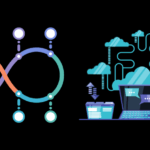
SRE Methodology transforms traditional IT operations with engineering rigor. Achieve reliability, scalability, and efficiency in your tech stack.
Site Reliability Engineering (SRE) is an essential function within organizations that aim to maximize system efficiency and uptime. It involves the application of reliability engineering practices to maintain and improve the reliability of systems. SRE methodology is an increasingly popular approach to achieving these goals.
Key Takeaways:
- SRE is a crucial function for organizations seeking to maximize system efficiency and uptime.
- Reliability engineering practices are applied in SRE to maintain and improve system reliability.
- SRE methodology is an increasingly popular approach to achieving these goals.
Understanding Site Reliability Engineering
Site Reliability Engineering (SRE) is a discipline that combines software engineering and operations to maximize system efficiency and uptime. Developed by Google in the early 2000s, SRE has since become a popular approach to managing complex systems.
Reliability engineering practices form the foundation of SRE. These practices aim to ensure that systems meet their reliability objectives, which include availability, performance, scalability, and fault tolerance. SRE involves applying these practices to operations work, with the goal of automating as much of the operations work as possible.
Principles and best practices of reliability engineering
The principles of reliability engineering include the following:
- Designing for reliability
- Implementing redundancy and failover systems
- Monitoring and measuring performance
- Responding to incidents and outages
- Performing post-incident analysis to understand the root cause of problems and prevent similar issues from occurring in the future
These principles are applied in SRE to improve system reliability. SRE teams work to design and implement systems that are resilient to failure and can recover quickly when issues do arise.
Industry trends and the evolution of SRE
SRE has evolved over the years, with an increasing focus on automation and DevOps practices. The rise of cloud computing has also had a significant impact on SRE, as more and more organizations adopt cloud-based infrastructure.
As a result, SRE has become more important than ever. It plays a critical role in ensuring the reliability of systems, especially in industries such as finance, healthcare, and e-commerce, where downtime can have serious consequences.
The Role of Site Reliability Engineers

Site Reliability Engineers (SREs) play a critical role in ensuring that systems and applications remain reliable, scalable, and available. They are responsible for maintaining overall system health, addressing issues before they become critical, and developing tools and processes that help prevent future incidents.
SREs must have a deep understanding of reliability engineering practices, including monitoring, incident management, and error budgeting. They must also possess strong communication and collaboration skills, as they work closely with various stakeholders across an organization.
SRE Roles and Responsibilities
The role of an SRE often varies depending on the organization and the specific needs of the system they are responsible for. However, some common responsibilities include:
- Developing and implementing monitoring and alerting systems to proactively identify and address issues.
- Participating in incident management, including troubleshooting and resolving issues in a timely manner.
- Collaborating with software developers to build and maintain scalable, reliable, and efficient systems.
- Managing the configuration and deployment of systems, including scaling and rolling out updates.
- Analyzing system performance and reliability data to identify trends and areas for improvement.
In addition to these technical responsibilities, SREs must also possess strong communication and collaboration skills to work effectively with other teams across an organization. They must be able to communicate complex technical issues to non-technical stakeholders, and work to ensure that all teams are aligned on system performance goals and priorities.
Successful SRE Teams
Successful SRE teams are those that prioritize collaboration, communication, and a commitment to continuous improvement. They work to establish strong relationships with other teams across the organization, ensuring that everyone is working towards the same goals and priorities.
They also prioritize automation and tooling, working to develop and implement processes and tools that help streamline system management and maintenance. This allows them to focus on proactive monitoring and issue prevention, rather than reactive incident management.
Finally, successful SRE teams embrace a culture of learning and knowledge sharing. They regularly review and analyze system performance data, looking for opportunities to optimize and improve system performance over time.
Implementing SRE Methodology
Implementing SRE methodology requires a systematic approach to ensure reliability and efficiency in system operations. Here are the key steps to follow:
- Define Service Level Objectives (SLOs) – First and foremost, define your SLOs. These are the goals for system reliability and uptime that you want to achieve.
- Set Error Budgets – Once SLOs are defined, set error budgets. This is the amount of time that your system can experience downtime without violating the SLOs.
- Monitor System Metrics – Establish a monitoring system to track metrics that are critical to system reliability. Use tools like Prometheus, Grafana, and others to gather and store metrics data.
- Create an Incident Response Plan – Develop a plan to identify and resolve system incidents. Define responsibilities, escalation procedures, and communication channels.
- Automate Processes – Use automation to streamline and optimize system processes. This will reduce the risk of human error and increase efficiency.
- Conduct Post-Incident Analysis – Analyze incidents to identify the root cause and take appropriate measures. Use post-incident reviews to improve your incident response plan.
- Continuously Improve – Finally, continuously improve your processes, tools, and systems to remain ahead of potential issues.
By following these steps, you can implement SRE methodology and ensure that your system remains highly available and reliable.
Measuring and Monitoring System Reliability
Reliability is a crucial aspect of any system, and measuring and monitoring it is essential for maintaining high uptime and efficiency. Site Reliability Engineering emphasizes the importance of setting appropriate Service Level Objectives (SLOs) and aligning them with business goals.
One commonly used metric in SRE is the Mean Time Between Failures (MTBF), which measures the average time between system failures. Another useful metric is the Mean Time to Recover (MTTR), which measures the average time it takes to restore the system after a failure.
In addition to metrics, there are a variety of monitoring tools used in SRE to track system performance and detect issues. These can include open-source tools like Prometheus and Grafana, as well as commercial solutions like Datadog and New Relic.
Monitoring can be done at various levels, including application-level monitoring, system-level monitoring, and network-level monitoring. Application-level monitoring can involve tracking user experiences or specific functions of an application. System-level monitoring can monitor the underlying infrastructure such as servers, storage, and databases. Network-level monitoring can monitor traffic and network performance.
Effective monitoring and measurement are critical for identifying areas of improvement and driving continuous improvement in reliability engineering practices. SREs use these performance metrics to iterate and optimize systems continuously.
Incident Response and Post-Incident Analysis

Effective incident response is critical to maintaining system reliability. SRE teams play a crucial role in mitigating and resolving incidents as quickly as possible, minimizing downtime and ensuring optimal system performance.
When an incident occurs, SRE teams follow a well-defined set of procedures to isolate the problem, identify its root cause, and develop a resolution. This process typically involves coordinating with other stakeholders, such as developers and operations personnel, to ensure a quick response and minimize the impact on end-users.
Post-incident analysis is equally important in preventing future incidents. SRE teams conduct thorough reviews of each incident, analyzing the data, and identifying areas for improvement. This information is then shared with the broader organization, helping to drive continuous improvement and enhance system reliability.
One key to effective incident response is developing and maintaining a detailed incident response plan. This plan should be regularly reviewed and updated to ensure that it reflects current system configurations and best practices.
Another critical component of incident response is effective communication. SRE teams work closely with other stakeholders to ensure clear and timely communication throughout an incident, providing regular updates on progress and expected resolution times.
By following these best practices, organizations can minimize the impact of incidents and build a culture of continuous improvement that drives system reliability and availability.
Automation and Continuous Improvement in SRE
Automation is a critical component of reliability engineering practices and SRE. By automating routine tasks and processes, SRE teams can focus on developing and improving systems, rather than firefighting incidents.
Continuous improvement is another key principle of SRE, ensuring that systems are always evolving to meet changing business needs. By using automation tools to identify and address problems quickly, SRE teams can continually improve the reliability of systems.
There are a variety of industry-leading frameworks and tools used in SRE automation, such as Ansible, Puppet, and Chef. These tools help automate configuration management, deployment, and monitoring tasks. Additionally, they provide a standardized approach to automation that ensures consistency and reliability in processes.
Challenges and Pitfalls in SRE Implementation

Implementing SRE methodology can be a complex process. There are several challenges and pitfalls that organizations must be aware of to ensure a successful adoption of reliability engineering practices.
Challenge 1: Resistance to Change
One of the biggest challenges that organizations face when implementing SRE is resistance to change. SRE requires a shift in mindset and culture, and not all stakeholders may be on board with this change. To overcome this challenge, it is important to communicate the benefits of SRE and involve all relevant stakeholders in the adoption process.
Challenge 2: Lack of Resources
Implementing SRE requires a significant investment of time, money, and resources. Organizations may struggle with allocating the necessary resources to implement SRE effectively. To overcome this challenge, it is important to prioritize SRE as a strategic initiative and allocate resources accordingly.
Challenge 3: Siloed Teams
SRE requires cross-functional collaboration between teams, including development, operations, and security. If these teams operate in silos, it can hinder the adoption of SRE. To overcome this challenge, it is important to foster a culture of collaboration and ensure that all teams are working towards the common goal of maximizing system reliability.
Pitfall 1: Lack of Defined SLOs
Setting appropriate Service Level Objectives (SLOs) is a critical component of SRE. Without clear and defined SLOs, it can be difficult to measure and optimize system reliability. To avoid this pitfall, it is important to define SLOs that align with business goals and are measurable.
Pitfall 2: Over-emphasis on Automation
Automation is an important component of SRE, but it is not a panacea. Over-emphasizing automation can actually lead to decreased system reliability if not implemented correctly. To avoid this pitfall, it is important to strike a balance between automation and human intervention.
Implementing SRE methodology requires a commitment to change and a willingness to overcome challenges and pitfalls. By prioritizing SRE as a strategic initiative, fostering cross-functional collaboration, and avoiding common pitfalls, organizations can successfully adopt reliability engineering practices and maximize system efficiency and uptime.
Conclusion
Site Reliability Engineering (SRE) is a critical component of maximizing system efficiency and uptime. By embracing reliability engineering practices and implementing SRE methodology, organizations can significantly improve the reliability of their systems.
Throughout this article, we have explored the concept of SRE and its key principles and best practices.
The role of Site Reliability Engineers and the importance of collaboration within organizations stand out as key factors for successful SRE implementation.
Key steps in implementing SRE methodology include error budgeting, monitoring, and incident response. Measuring and monitoring system reliability through appropriate service level objectives (SLOs) proves essential, as does a thorough incident response process and post-incident analysis.
Automation and continuous improvement are also essential components of SRE. By embracing these practices, organizations can drive efficiency and effectiveness in their systems. However, SRE implementation can also be challenging, and we have discussed common pitfalls and offered practical solutions to overcome them.
SRE is a vital practice for any organization looking to maximize system efficiency and uptime. By embracing reliability engineering practices and implementing SRE methodology, organizations can significantly improve the reliability of their systems and ensure they continue to operate at peak performance.
FAQ

Q: What is SRE methodology?
A: SRE stands for Site Reliability Engineering. It is a methodology used by organizations to ensure the reliability and performance of their systems and services. SRE combines software engineering practices with principles of operations to create scalable and reliable infrastructures.
Q: What are the principles of SRE?
A: The principles of SRE include automation, monitoring, incident response, capacity planning, and change management. These principles help organizations ensure the reliability, availability, and performance of their systems and services.
Q: What is the difference between SRE and DevOps?
A: SRE and DevOps are related but distinct methodologies. DevOps focuses on collaboration and communication between development teams and operations teams, while SRE specifically focuses on ensuring the reliability and performance of systems and services.
Q: What are the best practices for implementing SRE?
A: Some best practices for implementing SRE include setting clear goals and objectives, establishing effective communication channels, using automation to reduce toil, and continuously monitoring and measuring performance using service level objectives (SLOs).
Q: How can I start my SRE journey?
A: Starting your SRE journey involves understanding your current systems, identifying areas for improvement, setting reliability goals, and gradually implementing SRE practices such as automation, monitoring, and incident response.
Q: What are the roles and responsibilities of an SRE team?
A: The roles and responsibilities of an SRE team typically include monitoring system performance, responding to incidents, managing capacity and scalability, conducting post-incident reviews, and collaborating with development and operations teams.
Q: How does SRE work at Google?
A: SRE at Google is a well-established practice. Google’s SRE teams work closely with development teams to ensure the reliability and performance of Google’s services. They follow a model that combines software engineering with operations principles and best practices.
Q: What is a typical SRE team implementation?
A: A typical SRE team implementation involves creating a dedicated team of SREs who work alongside development and operations teams to ensure the reliability and performance of systems and services. The team focuses on automation, monitoring, incident response, and capacity planning.
Q: What are the similarities between SRE and DevOps?
A: SRE and DevOps share similarities in their goals of improving collaboration between development and operations teams and ensuring the reliability and performance of systems and services. Both methodologies emphasize automation, monitoring, and incident response.
Q: What are the common challenges faced by SRE teams?
A: Common challenges faced by SRE teams include balancing development tasks with operational responsibilities, managing latency and performance issues, aligning with strict reliability standards and practices, and navigating the interdependencies between development and SRE work.
Noah is an accomplished technical author specializing in Operations and DevOps, driven by a passion ignited during his tenure at eBay in 2000. With over two decades of experience, Noah shares his transformative knowledge and insights with the community.
Residing in a charming London townhouse, he finds inspiration in the vibrant energy of the city. From his cozy writing den, overlooking bustling streets, Noah immerses himself in the evolving landscape of software development, operations, and technology. Noah’s impressive professional journey includes key roles at IBM and Microsoft, enriching his understanding of software development and operations.
Driven by insatiable curiosity, Noah stays at the forefront of technological advancements, exploring emerging trends in Operations and DevOps. Through engaging publications, he empowers professionals to navigate the complexities of development operations with confidence.
With experience, passion, and a commitment to excellence, Noah is a trusted voice in the Operations and DevOps community. Dedicated to unlocking the potential of this dynamic field, he inspires others to embrace its transformative power.







